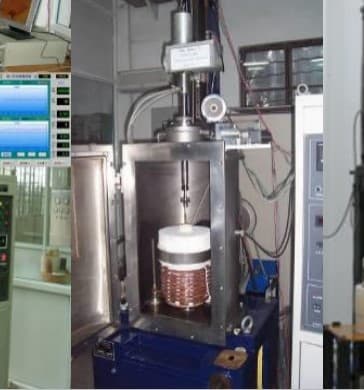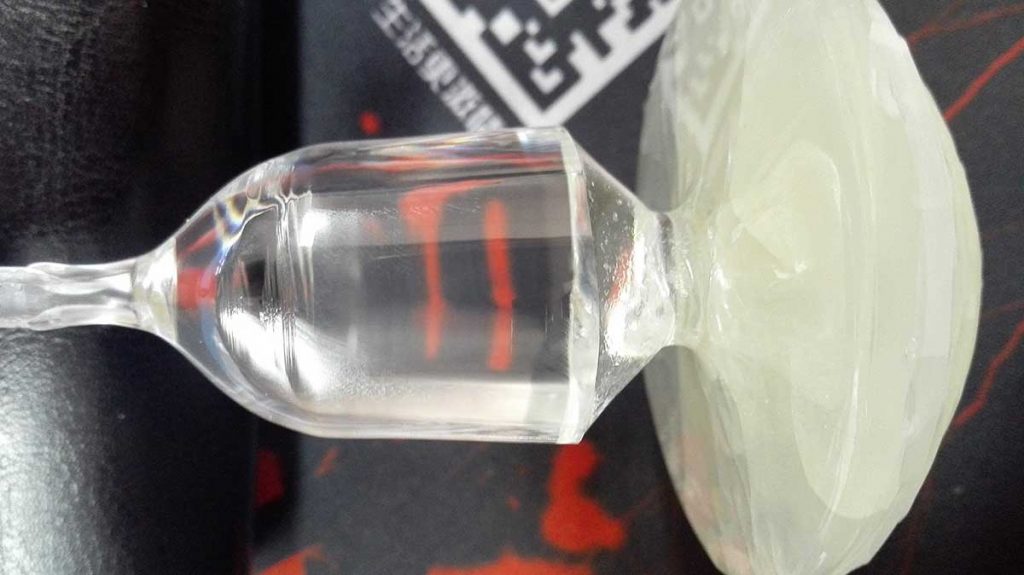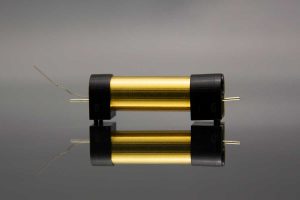YCa4O(BO3)3 (YCOB) is a nonlinear crystal possessing good thermal, mechanical and nonlinear optical properties. It is regards the important candidate frequency conversion material for the high-average power laser system. Compared with other nonlinear crystals commonly utilized in OPCPA systems, YCOB crystal has several prominent properties: high damage threshold, moderate thermal conductivity, and nonlinear coupling.YCOB nonlinear plate was used in high average power frequency conversion of the mercury laser.Because the growth is from a congruent melt, it enables to match the growth rate of KDP. It also has the capability to produce large-aperture plates for high-average power second and third harmonic generation.
During the artificial preparation of YCOB crystals, we often use Czochralski Method.
YCOB melts nearly congruently, so that it can be pulled directly from a melt reasonably close to the stoichiometric composition. A 30 kW Pillar power generator with maximum frequency of 10 kHz was used as power supply and a Micricon 823 controller was used for the two-loop weight feedback control. The charge was placed in either an iridium or a platinum crucible and heated by radio-frequency (RF) induction. The constant diameter of the crystal was controlled by the top-weighing method. A neutral atmosphere was provided by a continuous flow of nitrogen gas. The starting material was prepared by mixing Y2O3 , CaO and B2O3 powders (purity ‘99.99%) in proportions according to the chemical reaction: Y2O3+8CaO+3B2O3 — 2YCa4O(BO3)3.
The composition was adjusted to compensate both the evaporation and noncongruency during the growth. The mixture of chemicals was loaded in an iridium crucible of 75 mm in diameter and height, and heated to a temperature slightly higher than the melting point of YCOB at 1510°C. When all the charge was melted and homogenized, the seed, held on an alumina rod was dipped to touch the melt at a rotation rate of 15—20 rpm. The typical pulling rate was 1—1.5 mm/h. It took about six days to grow a 40 mm in diameter and 150 mm long crystal with good optical quality. As much as 80% of the melt can be converted into single crystal. Further growth will produce defects and inclusions inside the crystal. Commercial size crystal with 75 mm in diameter and 200 mm long has been grown out of a larger crucible using the similar procedure.
The Growth Device for Crystals

The device of Czochralski Method is composed of five parts:
1、Heating Systeam
The heating system is composed of heating, heat preservation and temperature control. The most commonly used heating devices are divided into resistance heating and induction heating.
In this operation, we choose intermediate-frequency induction heating. This method depends on the 2.5KHz – 10KHz current flowing into the loop and generate strong magnetic field, which causes eddy currents and strong heat in the crucible. As a result, the temperature of crystal rises rapidly.
The heat preservation device usually uses the nonmetallic oxide material to make the heat shield and the thermal insulating layer. It is mainly operated and controlled by sensors, controllers and other precision instruments.
2、Crucible and Seed Holder
Materials of crucible requires having stable chemical properties, high purity, and the melting point should be higher than the melting point of raw material 200℃ above. The common materials of crucible are platinum, iridium, silicon dioxide or other high melting point oxides. Seed crystals are clamped with seed holder. The seed crystal should be single crystal without dislocation or with low dislocation density.
As the melting point of YCOB crystal is 1510℃, and that of platinum (Pt) is 1774℃, the difference between them is small, and the platinum is easy to be lost in the heating process. Therefore, we use iridium crucible for crystal growth during this process.
3、Drive System
The transmission system is composed of seed crystal rod, crucible shaft and lifting system, and adopts high precision rare earth permanent magnet DC motor to connect the seed crystal rod for transmission, so as to ensure the stability and precision of rotation and lifting.
4、Atmosphere Control System
When YCOB crystals grow, they are usually filled with an inert gas such as high-purity nitrogen or argon to protect the iridium crucible from oxidation loss. Due to the anoxic environment is not conducive to the growth of YCOB crystals, a little amount of air should be retained during vacuum extraction to maintain a certain oxygen partial pressure in the system.
5、Rear Heater
Rear heater is usually placed on the top of the crucible, and the growing crystals gradually enter the post-heater, where they are cooled to room temperature. The main function of the rear heater is to regulate the temperature gradient between the crystal and the melt, control the diameter of the crystal, and avoid the crystal rupture caused by the phenomenon of component undercooling.
Crystal Growth Technology
1、Into a crucible
After weighing all the raw materials in a stoichiometric ratio, grind and mix them evenly and load them into iridium crucible.
2、Vacuuming – Leak Hunting – Pressure Regulating
After sealed single crystal furnace, vacuum and flush it with nitrogen for 2-3 times. Open the vacuum valve and nitrogen valve after the leakage rate reaches the standard, so that the atmosphere and pressure conditions required for the growth of single crystal in the furnace can be achieved.
3、Melt the material
Turn on the heater to melt the raw material at 1000 ~ 1100℃ and adjust the feeding time according to the batch charge.
4、Seeding
After all the material is melted, reduce the power. When the liquid level temperature is close to the seeding temperature, drop the seed crystal and the fusion with the melted raw material is completed. Then, pull the crystal slowly and make a single crystal with 3~5mm in diameter.
5、Shouldering
After seeding, the temperature and pulling speed should be reduced appropriately. After waiting for the seed crystal to shrink to the ideal size (diameter is 3mm and length is 5mm), make the YCOB crystal slowly enlarge to the target diameter under a certain speed increase. The crystal is shouldered to its proper size and then the cylindrical growth begins.
6、Cylindrical growth
After growing to the target diameter, the crystal diameter was controlled within the target diameter by controlling the pulling speed and temperature. The lower lifting speed (<3mm/h) is beneficial to the growth of high quality YCOB crystal.
7、Lift off
After cylindrical growth and the diameter of crystal tail reduced to less than 5mm, lift it off directly which is used to separate the crystal from the raw material melt. In this process, the temperature change caused by the separation of the growth interface from the liquid level should be avoided, otherwise it will cause dislocation and slippage.
8、Cooling down and removing
After crystal growth, the rod needs to be cooled gradually to room temperature. Shock cooling will lead to stress accumulation inside the rod and cracking.









